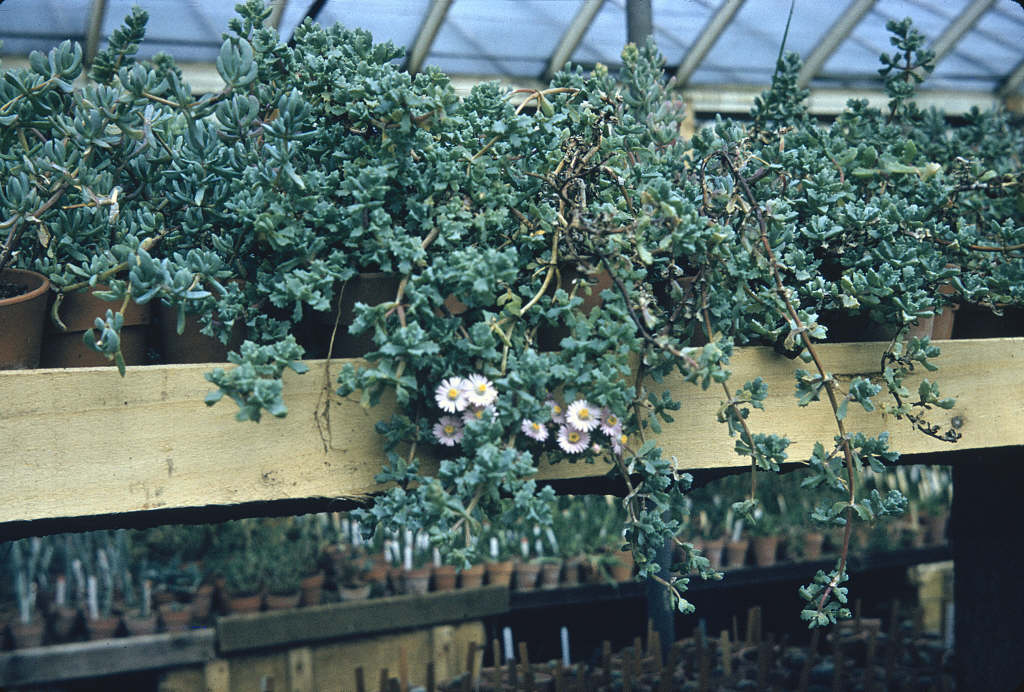Oscularia deltoides
deltoid-leaved dew plant
A spreading succulent perennial with oblong, toothed, 3-angled grey-green leaves and daisy-like, bright magenta-pink flowers 1.5cm across, in summer and early autumn

Buy this plant
Size
Ultimate height
Up to 10cmTime to ultimate height
2–5 yearsUltimate spread
0.1–0.5 metresGrowing conditions
Moisture
Well–drainedpH
Acid, NeutralColour & scent
| Stem | Flower | Foliage | Fruit | |
| Spring | Green Grey Silver | |||
|---|---|---|---|---|
| Summer | Pink | Green Grey Silver | ||
| Autumn | Pink | Green Grey Silver | ||
| Winter | Green Grey Silver |
Position
- Full sun
Aspect
West–facing or South–facing
Exposure
Sheltered Hardiness
H2Botanical details
- Family
- Aizoaceae
- Native to GB / Ireland
- No
- Foliage
- Evergreen
- Habit
- Matforming
- Genus
Oscularia are small, succulent perennials with fleshy, often angled leaves and daisy-like flowers in various bright colours
- Name status
Correct
- Plant range
- South Africa (SW Cape)
How to grow
Cultivation
Grow in cactus compost in full light. Water moderately from late spring to late summer and apply a low nitrogen liquid fertiliser every 4-6 weeks. Water sparingly at other times. Can be grown outdoors in summer but needs winter protection
Propagation
Propagate by seed at 19-24°C (66-75°F) in spring. Root sections of stem in spring and summer
Suggested planting locations and garden types
- Patio and container plants
Pruning
no pruning necessary
Pests
Diseases
Usually disease free
Get involved
The Royal Horticultural Society is the UK’s leading gardening charity. We aim to enrich everyone’s life through plants, and make the UK a greener and more beautiful place.